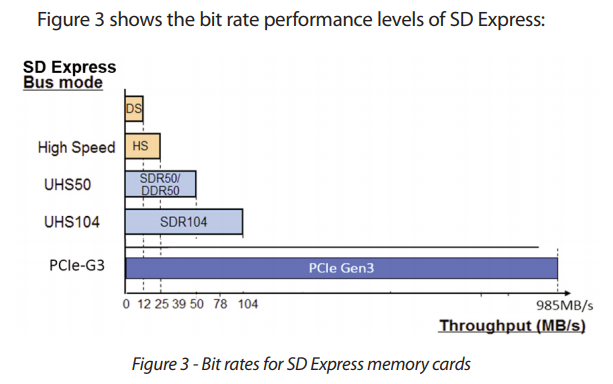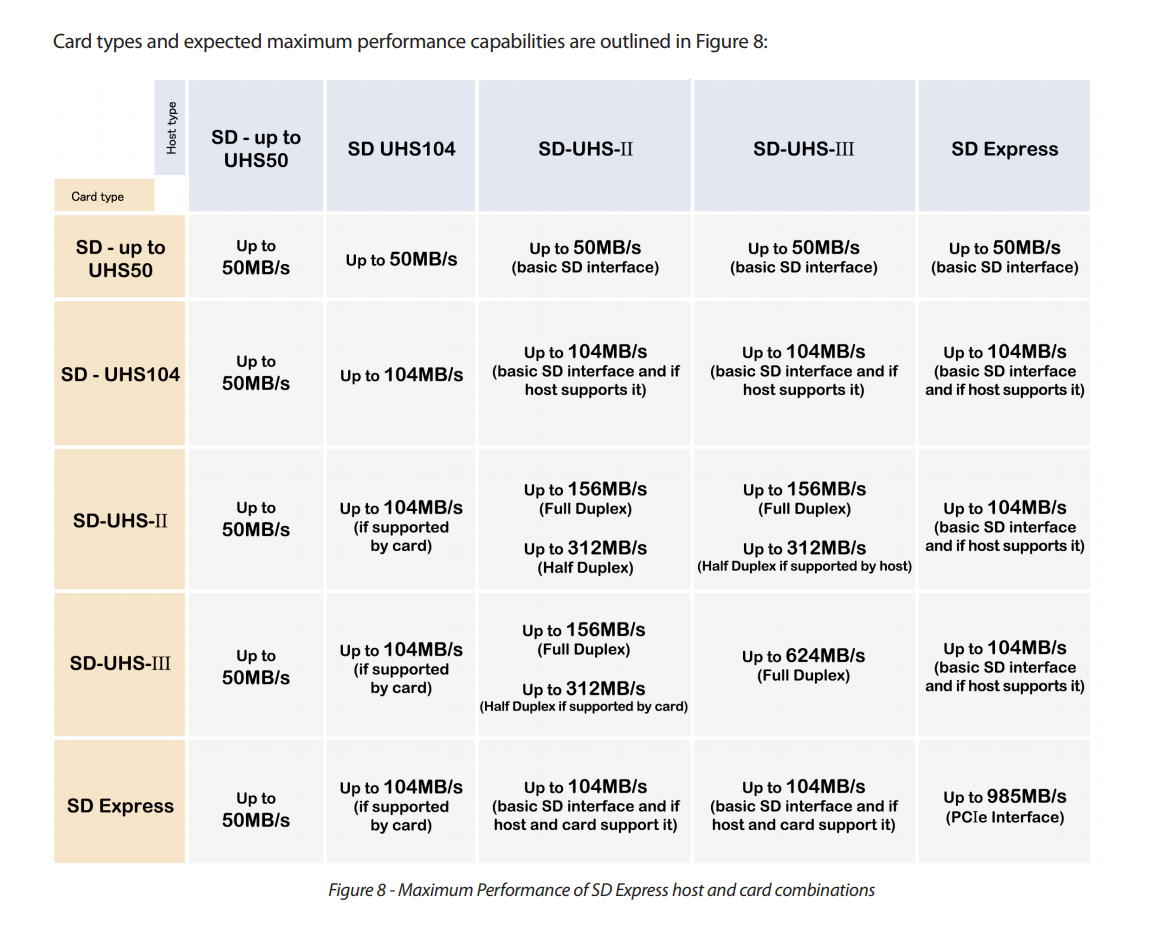SD Cards To Support Up To 128TB And 985 MB/s With NVMe and PCIe Interfaces
Soon you will be able to purchase new SD cards with the SD Version 7.0 specification. The new specification supports up to 985MB/s of throughput, which comes courtesy of PCIe and NVMe interfaces, and up to 128TB of capacity. That's quite the jump over the current 2TB limit.
985MB/s of throughput for a simple SD card may seem ludicrous, but higher-resolution video, VR, automotive use-cases, and IoT applications are steadily encroaching upon the performance limits of today's products.
OEMs are notoriously slow to adopt radically new designs, so the new SD Express specification is also backward compatible with the legacy UHS-I interface. Backward compatibility means we will see end devices come to market faster, whereas other faster interfaces have withered on the vine due to reworked interfaces that prevent broad uptake.
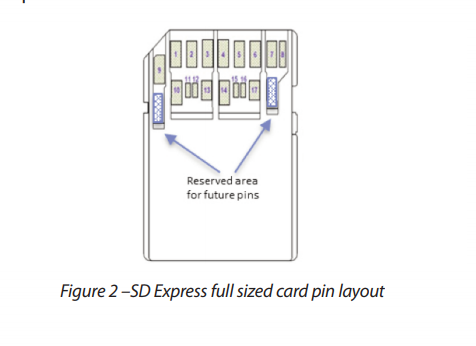
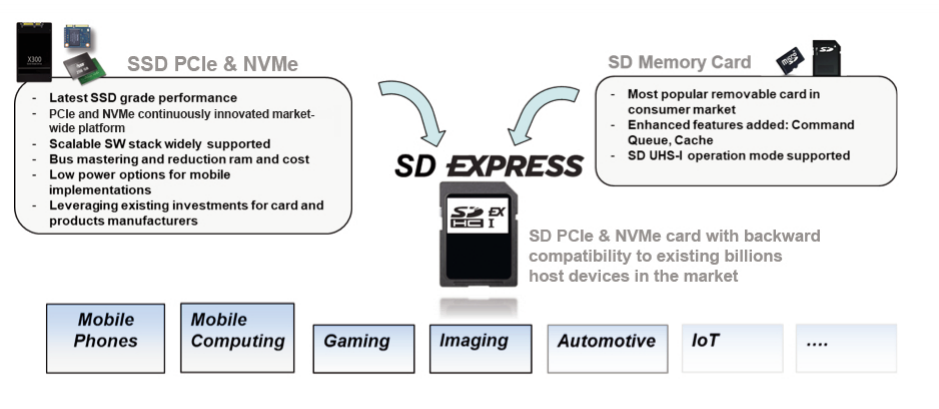
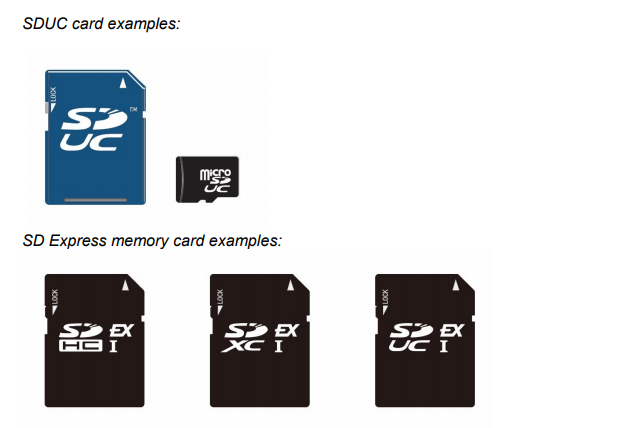
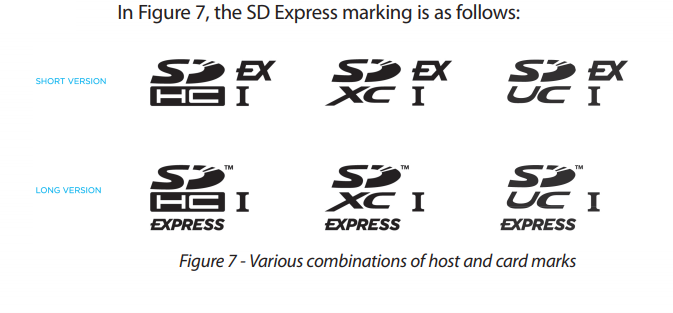
The specification has reserved space for new pins for future use, so it also provides room for forward progress (PDF). The specification also accommodates up to 1.8W of power consumption, which will help boost performance. The NVMe 1.3 protocol also brings several new features to SD cards, like Host Memory Buffer (HMB), which sets aside a small portion of system memory to boost performance, and Multi-Queue support, which improves performance during simultaneous file transfers.
The SD association will bring the interface to SDHX, SDXC, and SDUC cards first, but it also plans to bring the speedy connection to MicroSD cards in the future. The first cards wielding the improved interface should come to market in 2019.
Get Tom's Hardware's best news and in-depth reviews, straight to your inbox.

Paul Alcorn is the Editor-in-Chief for Tom's Hardware US. He also writes news and reviews on CPUs, storage, and enterprise hardware.
-
TJ Hooker ReplySoon you will be able to purchase SD Express cards that support up to 985MB/s of throughput courtesy of the new SD Version 7.0 specification.
This seems like the maximum theoretical throughput of the interface (985 MB/s is simply the speed of a PCIe 3.0 x1 connection), which may or may not bear any similarity to the actual speed of the storage. Kind of like how you could say SATA 3 HDDs "support up to 600 MB/s of throughput", but actual speed is limited by disk I/O.
Similar case with the size of 128 TB, just the max size supported by the spec and not indicative that we're going to see SD cards that big any time soon.
Just thought I'd clarify in case someone read that and thought they'd actually be able to buy an SD card that's 128 TB and/or has 1 GB/s read/write speeds. -
USAFRet Reply21094597 said:
Just thought I'd clarify in case someone read that and thought they'd actually be able to buy an SD card that's 128 TB and/or has 1 GB/s read/write speeds.
They will be available on ebay next week.
Just like the $10 128GB USB sticks are already.
:no: -
hannibal And these speed Are for pc with pci lines, not in your phone. So your phone is still a snail and card Reader in PC is fast...Reply -
AgentLozen @TJ HookerReply
The stuff that you mentioned is what would have tripped me up years ago. I remember when SDXC was first announced and I was expecting 2TB SD cards to come out soon. Thank you for the clarification.
Edit: I just reread this post and it sounds like it could be sarcastic. Rest easy, I'm being genuine. -
secretxax Hmm... seems like the Batman Beyond days are still in full-force with flying cars potentially by 2050.Reply -
alextheblue That chart deliberately leaves out UHS-II and UHS-III, to make SD Express look miles better than existing standards. I support SD Express but that is just sad.Reply
the new SD Express specification is also backward compatible with the legacy UHS-I interface.
Yes, with a "but". If you stick a NEW SD Express Platinum Turbo card in a UHS-II or UHS-III device... it will run at UHS-I speeds. This makes perfect sense given their desire for backwards compatibility, as they have to use the UHS-II/III pins for the PCIe link and keep the legacy (UHS-I and older SD) pins intact for backwards compat. However it is a bit counter-intuitive for the average person. They may not understand that a "faster" SD Express card is actually slower in a UHS-II/III device than a "slower" UHS-II/III card.
Also backwards compatibility isn't guaranteed, especially as capacities increase. But by that point we should all pretty much be on the new interface or perhaps even a successor. SDE-II... repurpose the legacy pins for another lane?
